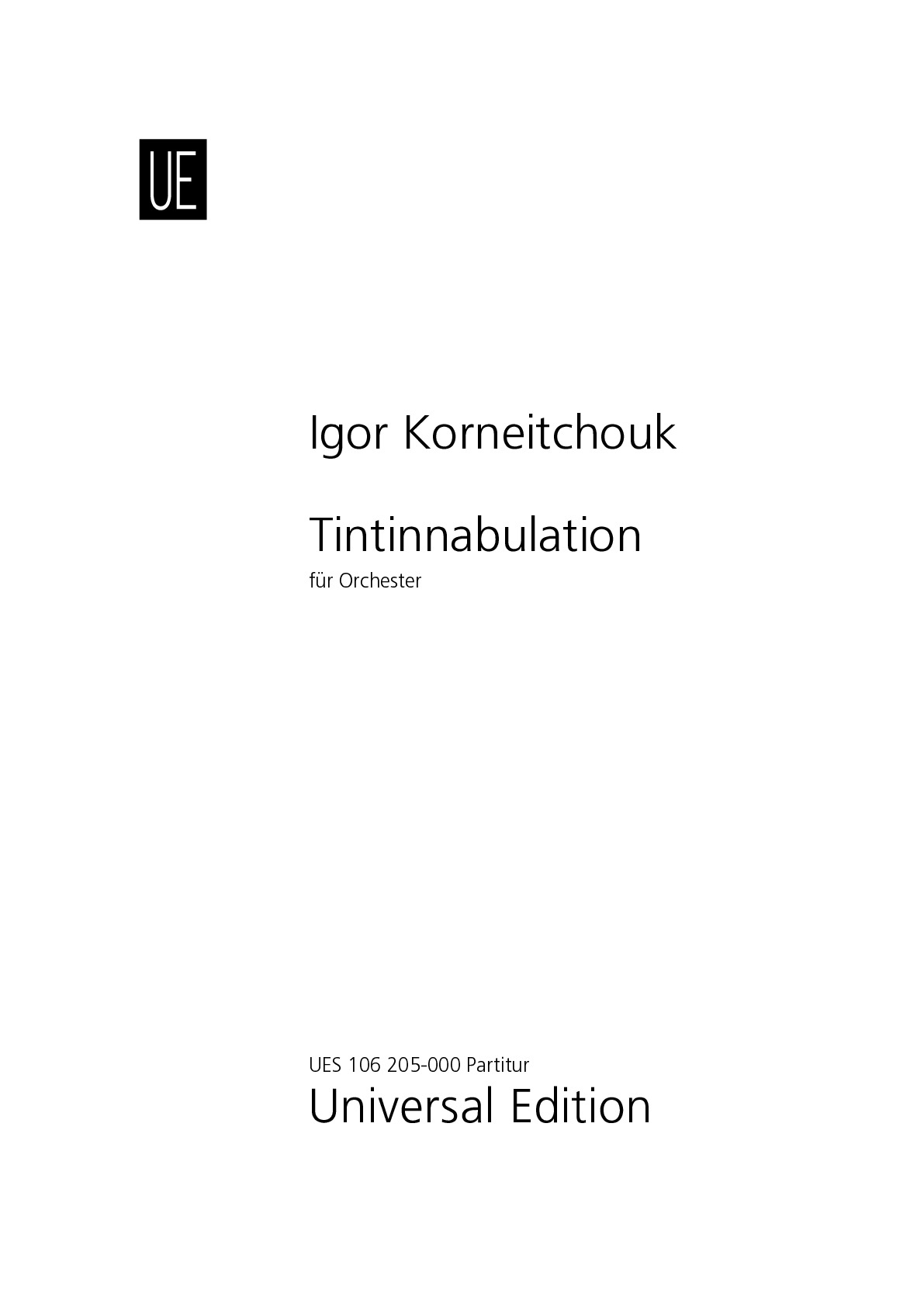

Igor Korneitchouk
Tintinnabulation
Short instrumentation: 3 3 3 3 - 4 3 3 1, mar, timp, t.bells, vib, xyl, perc(5), keyb, str
Duration: 8'
Instrumentation details:
1st flute
piccolo
1st flute
cor anglais
1st oboe
1st oboe
bass clarinet in Bb
1st clarinet in Bb
1st clarinet in Bb
contrabassoon
1st bassoon
1st bassoon
1st horn in F
1st horn in F
1st horn in F
1st horn in F
1st trumpet in C
1st trumpet in C
1st trumpet in C
bass trombone
1st trombone
1st trombone
tuba
timpani
xylophone
marimba
vibraphone
tubular bells
percussion (5 players)
keyboard
violin I (10 players)
violin II (10 players)
viola (8 players)
violoncello (8 players)
double bass (6 players)
Tintinnabulation
Sample pages
Video
Work introduction
The title "Tintinnabulation", meaning the frenzied ringing of bells, comes from Edgar Allan Poe's poem "The Bells." No singers are used for the text. Rather, instruments convey the vibrant colors of Poe's words evoking the different sorts of bells from the poem -- such as the silver bells of sleighs, bronze bells signaling an alarm, funereal iron bells -- frequently juxtaposing and interchanging them in a bi-partite fantasy. Tintinnabulation is a 2012 reworking of an earlier Korneitchouk score, From the Bells..., written in the 1980s for brass and percussion octet. When La Jolla Symphony conductor Steven Schick, a celebrated percussionist, requested an overture-like work to open the concert, the choice seemed apt. By the composer's own account, the revised work is almost a concerto for percussion ensemble.
"Keeping time, time, time,
In a sort of Runic rhyme,
To the tintinnabulation that so musically wells
From the bells, bells, bells, bells,
Bells, bells, bells - "
— Edgar Allan Poe
What is necessary to perform this work?
If a bell-tree or mark-tree is available, of the sort played by jazz/rock percussionists, that would be preferable to a Glockenspiel.

